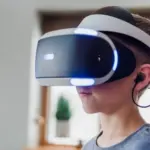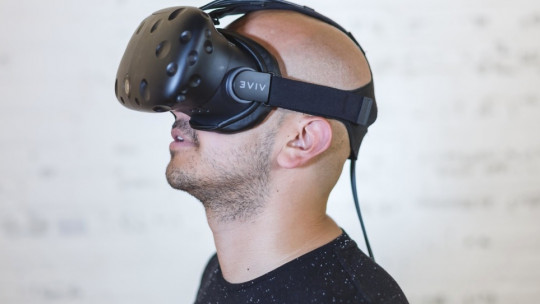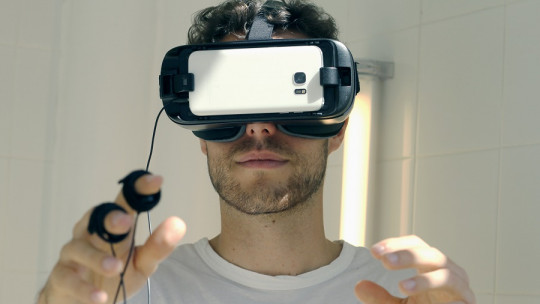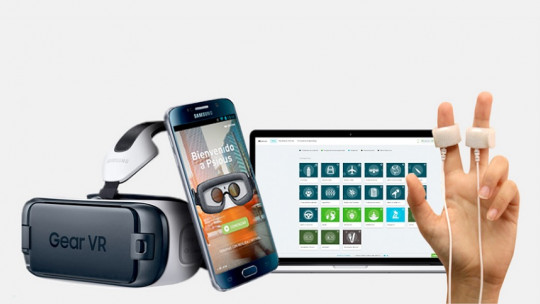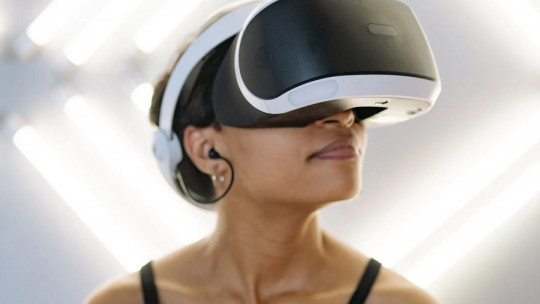
Virtual reality therapy is one of the most innovative resources used by psychologists. This does not mean that its main benefits are not known; in fact, more than twenty years of research on this technological resource have demonstrated its multiple uses in the field of psychology.
Especially used for phobias and other anxiety disorders, virtual reality therapy is presented as a very useful tool as it is adaptable to all types of psychological problems, offers privacy and is economical compared to other modalities of psychotherapy.
Let’s talk about why virtual reality therapy is useful highlighting in which disorders it is widely used and the benefits it entails.
What is the potential of virtual reality therapy?
Virtual Reality (VR) is a technological resource used to generate digital environments with a very realistic appearance, which allows it to be used with a wide variety of objectives. The first thing that comes to mind when talking about VR is that it is used as a form of entertainment and leisure, although it is also very common in military and aeronautical training. But it is especially useful in psychological therapy given some of its characteristics.
VR makes it possible to design very realistic fictional places, without the restrictions imposed by nature and economy (e.g. physical and material limitations). This is why with her it is possible to generate events, objects and beings that cannot occur in the real world. However, in psychological therapy, what interests us about Virtual Reality is to replicate environments as similar to those that a patient could face in real life.
Added to this, it is also worth noting that VR is usually accompanied by complementary materials that increase the degree of immersion in these artificial environments, the best known being Virtual Reality glasses, such as the Oculus Rift or the HTC VIVE. These devices serve to ensure that the entire field of vision of the subject using them is occupied by what is happening in the virtual environment, generating such a degree of immersion that for a few minutes the person forgets about the real world.
Main benefits of virtual reality therapy
There are several benefits that Virtual Reality brings to psychotherapy. These advantages have been widely demonstrated thanks to the fact that virtual reality therapy has more than twenty years of research, and with each passing year the technology is improved in terms of immersion and interaction, which has a positive impact on psychotherapy.
Mostly, this modality of psychotherapy is based on exposure therapy, where the patient is exposed to a phobic element increasingly and with greater intensity, and guided imagination therapy, in which the patient is asked to imagine a specific environment, both phobic and otherwise. With virtual reality, instead of having to ask the patient to imagine something or put them directly in a real phobic situation, they are introduced into a controlled, artificial but realistic environment, a place where the psychotherapist is in control and ensures that nothing goes wrong.
There are several reasons why virtual reality therapy is useful. Among them we highlight the following.
1. Adaptable to various psychological problems
Virtual Reality is a very adaptable tool, allowing environments to be recreated and programmed at the discretion of the psychotherapist and based on the patient’s needs. Thus, Its use does not have to be limited to the treatment of specific psychological disorders and problems.. With little effort, you can create resources for many health problems, and take advantage of parts of the environment for other patients.
2. Allows you to create complex situations
Another utility of virtual reality therapy is that it allows complex situations to be developed, such as sequences of actions, events, changes in the environment. Thanks to this tool, you can create situations such as a plane taking off, jumping from a very tall building, entering a dark parking lot, being chased by a spider…
3. It offers a lot of privacy
In the live exhibition, widely used therapy for phobias, There comes a time when it is necessary for the patient to face his fear realistically.. For example, if you are a person with agoraphobia, with a fear of large crowds like those in a shopping center, there will come a time when the psychologist will have to take the patient precisely to that place to see how he or she handles the situation.
Clearly, this is not a private situation and can become very counterproductive, making the patient even more afraid of going there because of the shame they have experienced from feeling exposed to others in the midst of psychotherapy. Virtual reality therapy avoids this loss of privacy because it can be used without leaving a room. It offers more privacy than other types of intervention in which it is necessary to go to a specific place to confront the phobic element.
4. Greater control over variables
In the exhibition in real environments you cannot control everything that happens. On the other hand, this is not a problem with virtual reality, since by using computer-created environments it is possible to modify them according to the patient’s needs and the stage of psychotherapy. Thus, with this technology it is possible to control things that are so difficult to control in the real world such as the weather, ambient noise, the size of the stimulus to be exposed…
5. Allows you to create a difficulty scale
And related to the previous point, thanks to the fact that the variables can be controlled, it is also possible to create a hierarchy of difficulty. Everything that appears in the virtual environment can be adjusted to meet a specific therapy purpose, adapted to the patient’s degree of progress and avoid exposing him to situations that exceed his current capabilities and that lead him to abandon the session..
6. More economical
Compared to other more analog modalities of therapy, Virtual Reality can be seen as more economical. Creating virtual environments means not having to travel to real ones, it is not necessary to buy specific physical elements for a specific intervention and, depending on the occasions, requires less help from co-therapists.
In what disorders is VR useful?
Virtual Reality is very useful for a wide range of mental disorders. This is especially so if VR glasses and headphones are used to create the sound environment, so that the patient is deeply immersed in the virtual environment and experiences it in first person. This therapy It is very useful for the following health problems:
- Specific phobias (fear of flying, blood, animals, heights, darkness…)
- Agoraphobia
- Generalized Anxiety Disorder (GAD)
- Social Anxiety Disorder
- Post-Traumatic Stress Disorder (PTSD)
- Obsessive-Compulsive Disorder (OCD)
- Alcohol use disorder
- Depression and dysthymia
- Eating Disorders (ED)
- ADHD
- Hypochondria
- Pain distraction: fibromyalgia, cancer patients…
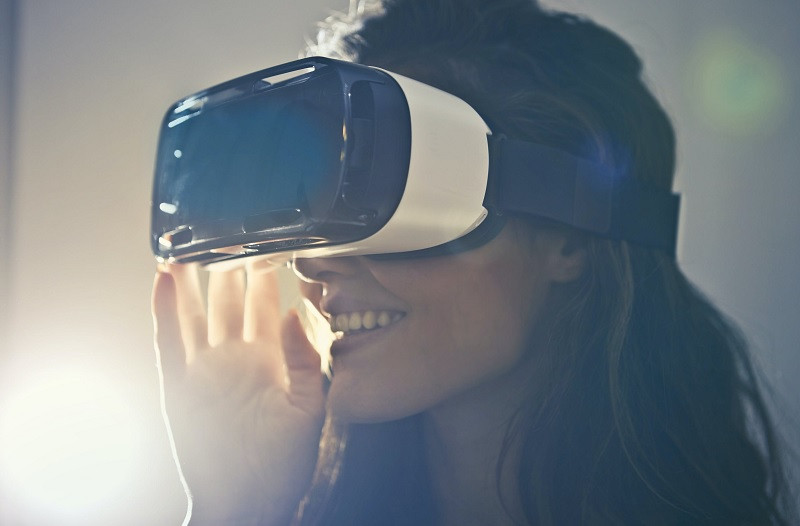
Of all these disorders, it is worth highlighting that virtual reality therapy It is especially useful with specific phobias. Thanks to the fact that they allow the creation of an artificial, fully controlled and customizable environment, it is possible to work very effectively on the patient’s pathological fear of something, such as heights, airplanes, spiders or dogs.
For example, if a person has a fear of heights, the first steps of traditional treatment would be to work on it within the consultation itself, such as showing them photographs of airplanes, videos of the interior of a plane, the sound of takeoff… As in the treatment Of all phobias, at some point you have to train in a real environment.
The problem here is that it is not possible to take the patient to that real environment just like that, because to do so they would have to buy a plane ticket or find another way to have contact with a real plane. Virtual reality solves this by allowing the patient to enter an immersive and interactive environment, so similar to that of a real airplane that it will give them the sensation of being on one, but without abandoning the safety and comfort of the therapist’s office.
This allows you to work on the alteration in an effective way, achieving significant improvements by increasing the degree of realism of the plane as the therapy progresses and making the patient feel safe at all times knowing rationally that they are still far from the real environment. Little by little, he will get used to the environment he previously feared and will overcome his phobia, or at least the anxiety symptoms will be reduced.
It can also be used to teach and improve the following strategies/tools in the patient:
- Training in relaxation, meditation and mindfulness.
- Emotional management training
- Training in social and communication skills
- EMDR Training
- Sports training
The psychologist will always be necessary
No matter how much technology advances, This does not mean that the figure of the psychologist is replaceable in the treatment of mental disorders.. Virtual Reality is a truly useful tool for therapy, but if there is no diligence or follow-up, something that a psychologist does, it does not matter how new this technology is. For this reason, one should not think that a patient with an anxiety disorder, simply by having VR and downloading any “treatment” program, without guidance or structure, will improve.
Of course, VR is a tool that we can use for more and more types of disorders and patients, quickly, safely and effectively. There are more and more treatments that can be used with this technology, and although the star continues to be exposure therapy for specific phobias, its usefulness as a relaxation tool and training in social and communication skills cannot be underestimated.
Psychologists who apply therapy with virtual reality take advantage of the capacity of this technology to generate controlled and measured environments where the amount of details and the degree of immersion and interaction are modifiable, thus increasing realism and consequently interfering with the response given by the patient. before the environment. This It is adapted to each person, problem and stage of psychotherapy.
Thus, virtual reality therapy is very useful, with an effectiveness backed by twenty years of research, validated every day by practice, adaptable to each person and environment and that allows treating phobias that, in the past, were neither economical nor quick. treat.

